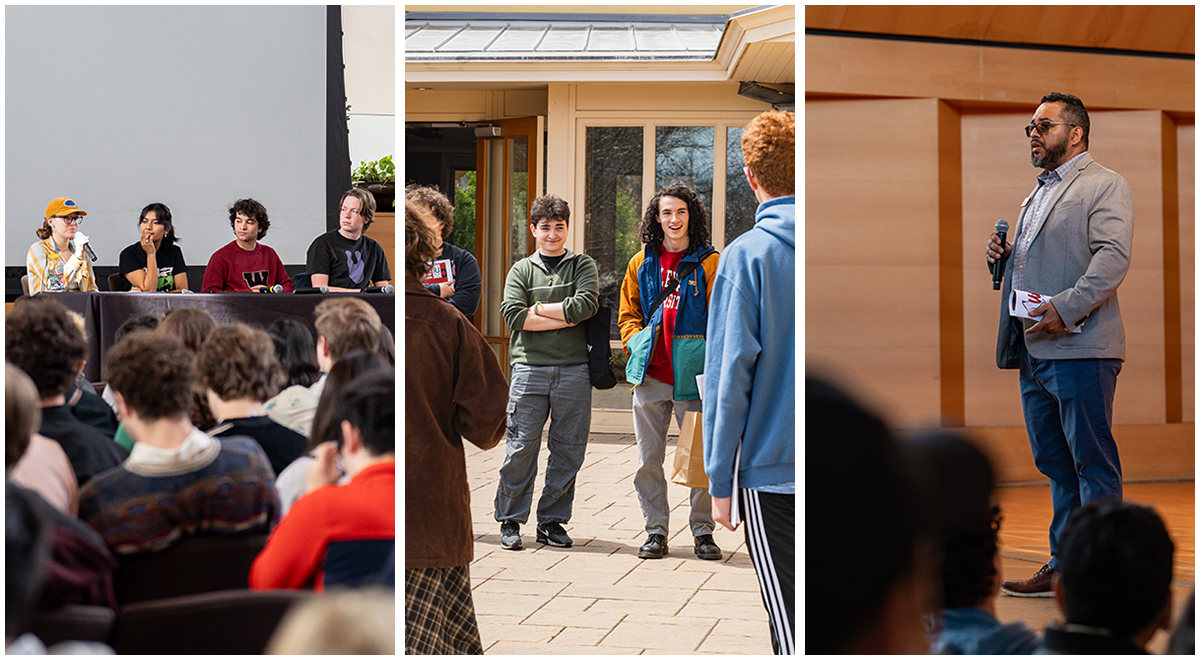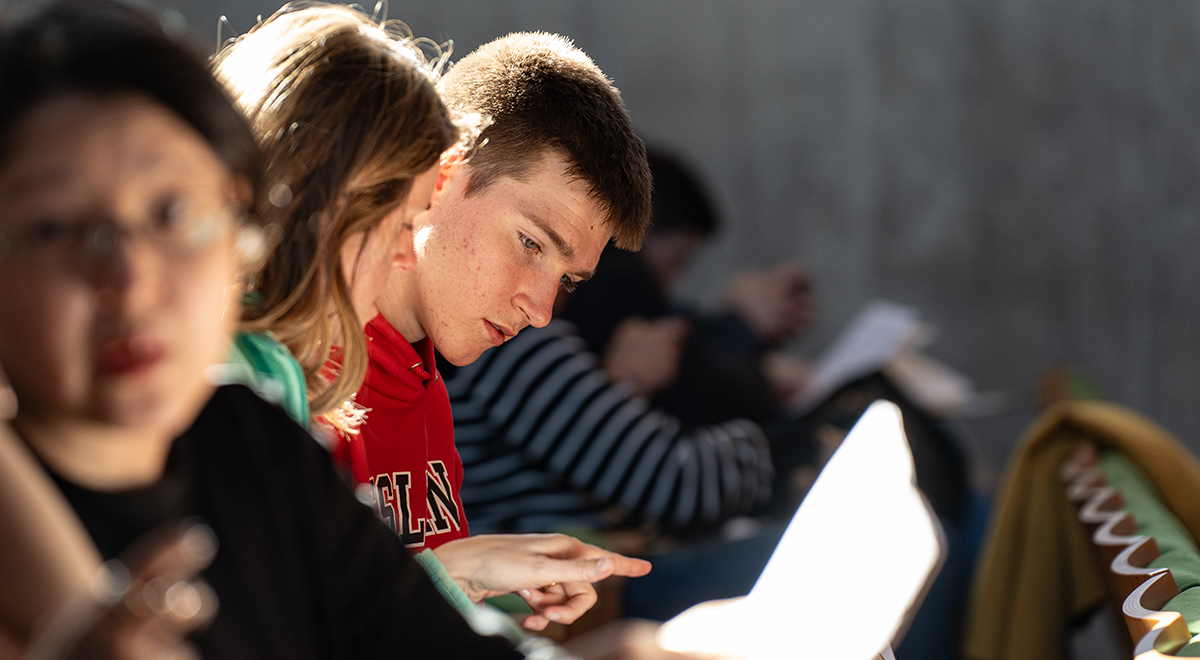At WesFest, Admitted Students Share Opinions on Diversity of Thought, Open Curriculum

At Wesleyan, there’s celebration in difference. And during his WesFest welcome address, President Michael S. Roth ’78 encouraged students to listen to other perspectives to learn as much as possible so they can benefit from those differences.
“You’re not going to learn much from other people—faculty or other students—who share all your views or your experiences,” Roth said. “When we talk about the value of diversity, we don’t just mean demographics—that’s part of it, of course, life experience, that’s part of it—we want you to encounter people whose views are different from your own.”
At WesFest, admitted, and some committed, students and their families experienced many facets of the campus they may, or will, spend the next four years exploring. They got a look into the day-to-day at Wesleyan through a full slate of events. They were welcomed to campus by administration, saw the University’s first-year residential housing offerings, went on tours, shadowed classes, and met with representatives of the many clubs and activities.

Some admitted students and their families said the ability to hear other perspectives and learn from new people was one of the main reasons they decided to attend WesFest.
Parent Angela Paul, of Stamford, Conn., said Roth’s address to students cemented that Wesleyan was the place for her son, Steve Paul—who said he already committed to Wesleyan and its Track and Field team. “This is a place for him because we’re more focused on him finding who he is, his development and not being around people that are just like him. I don’t want duplicates with him. I want him to expound and learn more about culture and different passions.”
“I like the message of ‘you should go to a place where you’re exposed to different perspectives,’ I think that’s important,” Steve Paul said. “In life, not everyone’s going to have the same perspective as you and it’s important to hear everyone’s thoughts.”
Sarah Weber, 17, of southern New Jersey said hearing about the importance of listening to multiple perspectives and the community focus on learning from different sources reaffirmed her desire to attend Wesleyan.
“I may learn to like something or find something that I really like and I didn’t know about, just because there’s so many people taking a bunch of diverse courses and things like that,” Tim Watson, 17, of Redlands, Calif. said.
During the WesFest welcome address on April 19, Amin Abdul-Malik Gonzalez, vice president and dean of Admission and Financial Aid, said Wesleyan cherishes transformative change. “If you’re looking for cookie cutter, we’re not it. If you’re looking to be challenged and comforted along the way, this is an incredible environment where the greatest resources are not just the facilities, the spaces, the buildings, but in fact the people.” Gonzalez said.
He added this year’s was the most competitive applicant pool in Wesleyan’s history, with a record number of applications submitted in this academic cycle.
Open Curriculum
Another key opportunity for many admitted students was the idea of the open curriculum at Wesleyan. The ability to explore their curiosities and engage with many different subject-matters, and subsequently research, stood out to many students throughout the three days of events.
“I want to study sociology but get involved with theatre in an interdisciplinary way,” said Anna Copeland, 18, of Skokie, Ill. “When I’ve told people that here, they’ve been like, ‘Oh yeah, of course you can do that.’”
After speaking to students involved in the Mainstage production on campus, Anna is particularly interested in joining Spike Tape, a student-led theater collective that puts on shows every semester. She also expressed interest in program housing, and the tight-knit community she experienced while visiting here.
Hannah Bigley, 18, of Arlington, Virginia is looking to double major in molecular biology and visual art. She said she wanted to come to a place where she can viably study both.
“What I really like, when I came here earlier when I was a junior, my tour guide told me about these underground tunnels that you use in the art department when it’s raining so you can carry your art pieces underground, so they don’t get water damage,” Bigley said. “That’s amazing—so innovative, I love it. And overall, I love how the campus looks. I love there’s going to be a new science building, there’s going to be new art studios. It’s perfect.”
Rose Chen ’26 contributed to this story.

